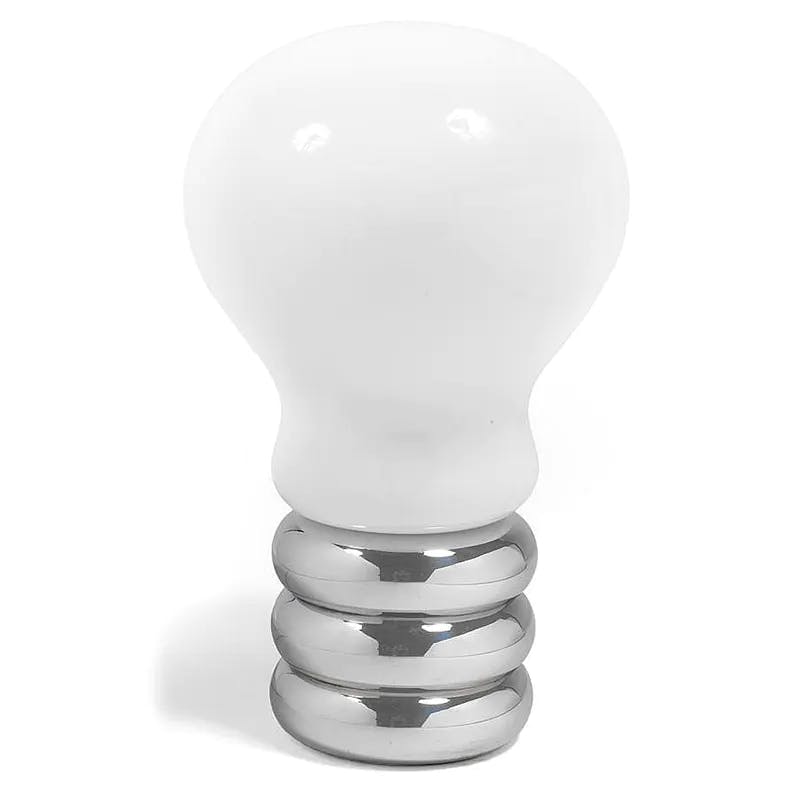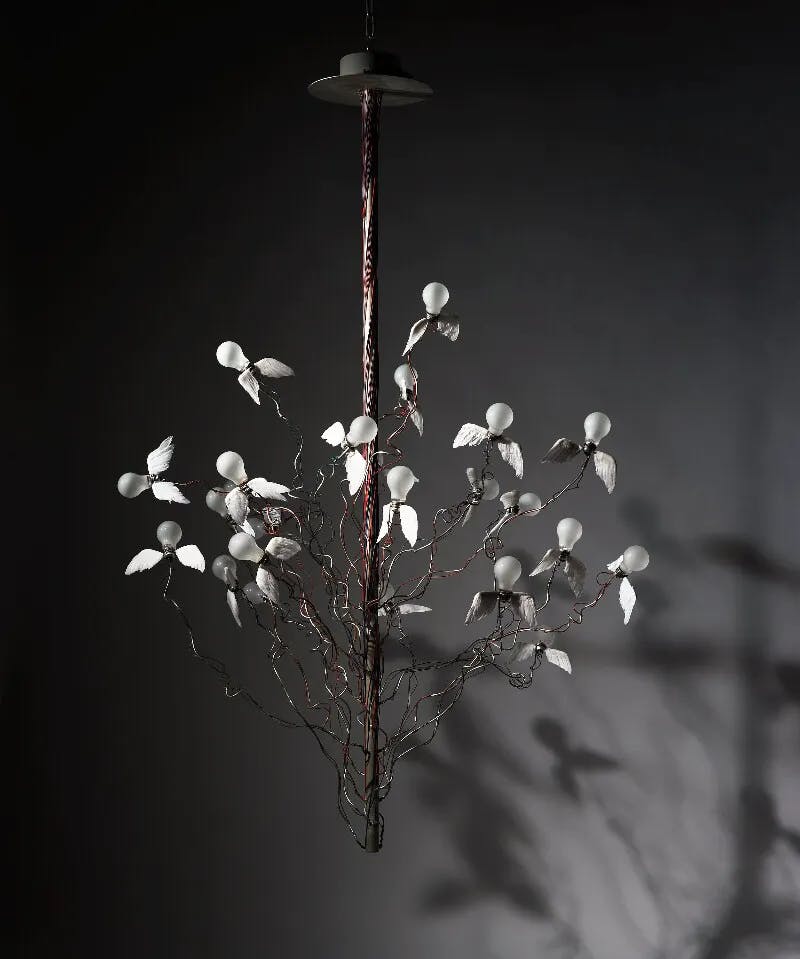Ingo Maurer: The Art of Illumination
The internationally renowned lighting designer was ironic, creative and innovative, and many of his projects are part of the permanent collection of MoMA today.
Called by all "the poet of light", in one of the last interviews released to Icon Design before his death on October 21, 2019, Ingo Maurer declared he did not consider himself a "poet" but "gravity-free", a creative who listens to his inner voice. What he could never deny, however, was being visionary and ironic: he changed the world of design and lighting, turning simple light bulbs into small (and large) dream objects.
Maurer was born in 1932, on the island of Reichenau, Lake Constance, in southern Germany. After training in typography and graphics, he left for the United States in the 1960s, where he worked as an independent designer before returning to Europe in 1963 and founding his company, Design M, which later became Ingo Maurer GmbH.

His debut in the world of lighting came in 1966, with the legendary Bulb, a lamp in blown crystal glass that in turn encloses a small light bulb in chromed metal. It was considered so innovative that two years later it became part of the permanent collection of MoMA, as well as many of his other incredible creations: Gulp, Little Black Nothing, YaYaHo, Los Minimalos Dos, Lucellino Wall, Wo bist Du, Edison ...? Zettel'z and Porca Miseria.
Related: The Art of Lighting: 8 Unique Lamps

The YaYaHo, from 1984, is almost reminiscent of a piece of furniture by Alexander Calder, who Maurer admired. It was a low voltage and suspension halogen system, in which all the elements are adjustable horizontally and vertically, for a total length of 32 feet. The YaYaHo was an immediate success; in fact Maurer was asked to create special installations for the exhibition "Lumières je pense a vous" at the Center Pompidou in Paris, at Villa Medici in Rome and at the Institut français d'architecture in Paris.
Want more articles straight to your inbox? Subscribe to our free newsletter!
At the end of the 1980s, the Fondation Cartier pour l'Art Contemporain in Paris and the Stedlijk Museum in Amsterdam dedicated important exhibitions to Ingo Maurer's creations, such as "Light Chance Reflection" (1989) for which the light designer created lighting not designed for mass production.

In the early '90s, with the "Lucellino" series, Maurer put his wings to light bulbs, in the true sense of the word with small fins of hand-made goose feathers, glass, brass and synthetic material decorated lamps that will always remain real works of art.
Related: A Hotel Becomes a Home in Stockholm
In 1994, he introduced an incredible chandelier composed of pieces and shards of porcelain plates, cups and teapots, entitled Porca Miseria!

"It was when we went to Milan once, for the famous Salone del Mobile," explained Maurer about its conception. "And I found too many designs there slick and design-conscious. ‘Porca Miseria’ is partly a kind of revolt against that tendency. I’m also an admirer of slow-motion explosions, like in the film by Antonioni called Zabriskie Point, where he blew up a castle in slow motion. When I first showed it in Milan, I called the lamp ‘Zabriskie Point.’ But then the first few Italians came, and—since no one had seen this ever before—said, ‘Porca miseria!’ which is a kind of a curse: ‘What bad luck!’ So I immediately changed the name to ‘Porca Miseria.’"
At the end of the '90s, Zettel'z 5 arrived, one of Maurer's most popular lamps: in stainless steel, heat-resistant satin-finish glass and Japanese paper, the Zettel'z is composed of 31 pre-printed sheets and 49 white sheets, which can be used for personal messages, drawings and sketches. This beautiful project by Maurer invited its owners to use their creativity.
Related: The True Story of the Toucan Lamp
The 2000s were equally rich in creativity and innovation for Maurer. In 2002, together with Raffaele Celentano, he created the Campari Light, a suspension lamp inspired by the works of Andy Warhol and the concept of Marcel Duchamp's ready made. For the creation of the chandelier, Campari soda bottles were used without making any changes, each was individually detachable and replaceable. The result was a captivating and original lamp, with a soft light in the warm Campari red tone.

Among the last incredible projects by Ingo Maurer were the lamps I Ricchi Poveri Bzzzz and Toto, from 2014, the wonderful series Luzy (2018), a glove in colored rubber with bulbs hanging off the fingertips and Butterflies dreaming, an elegant and light object surrounded by handmade butterflies.
Related: Gio Ponti: A Founding Architect
Maurer has received several international awards for the importance of his research in design and lighting, including several design prizes: in 1999 from the city of Monaco, in 2000 from the city of Barcelona, the Georg Jensen Prize in 2003 and the Compasso d'Oro in 2011.
Ingo Maurer passed away on October 21, 2019, leaving behind a great artistic legacy in the world of design and his company, Ingo Maurer GmbH, which continues to work in the spirit of the founder. Today, his sculptural lighting designs sell for high prices at auction, with his record set for Golden Ribbon that sold for $219,323 in 2009. Many versions of his "Porca Miseria" ceiling lights have sold for over six figures.
Discover more articles on Barnebys Magazine!
This is an updated version of the article originally published on October 29, 2019.


